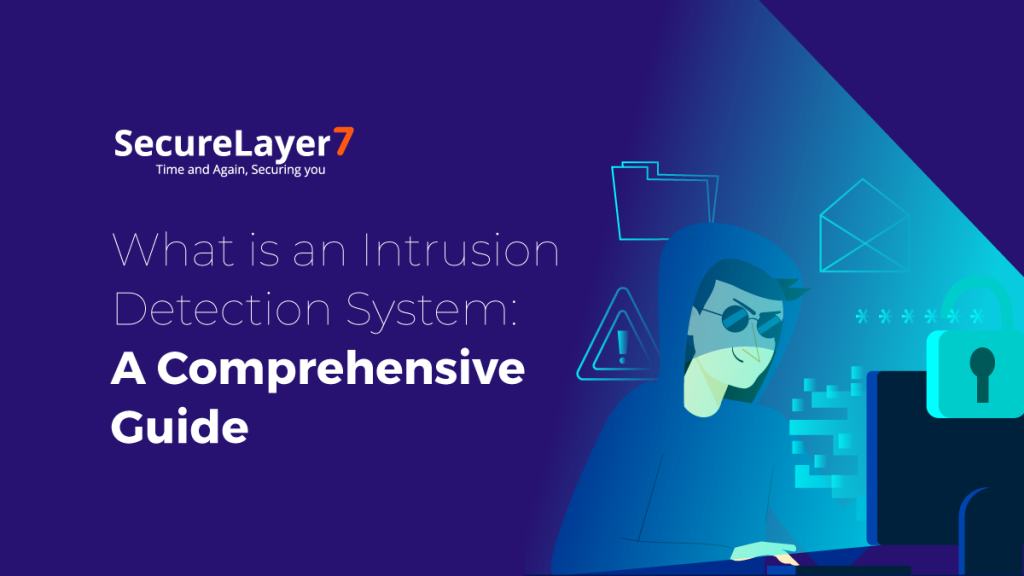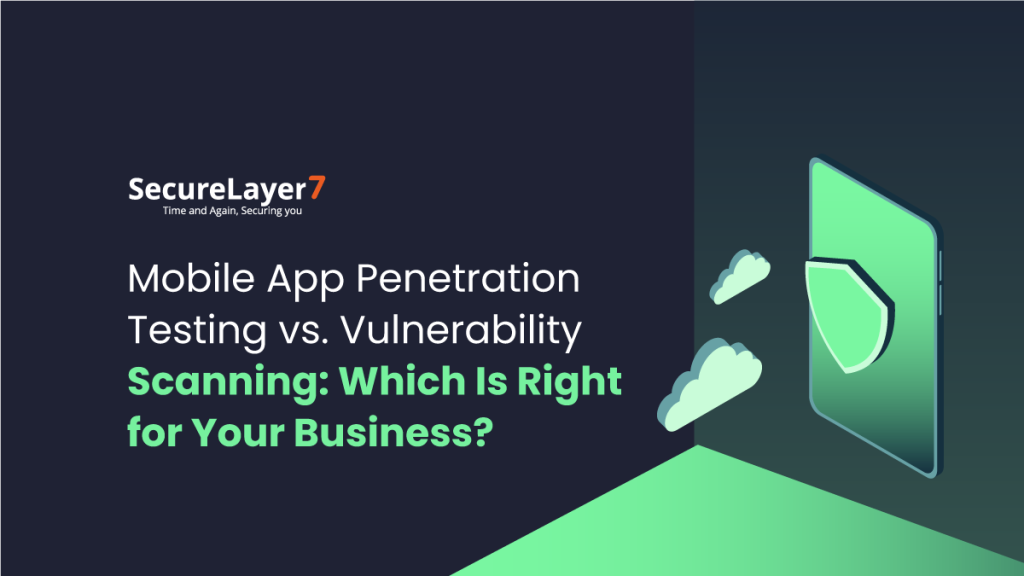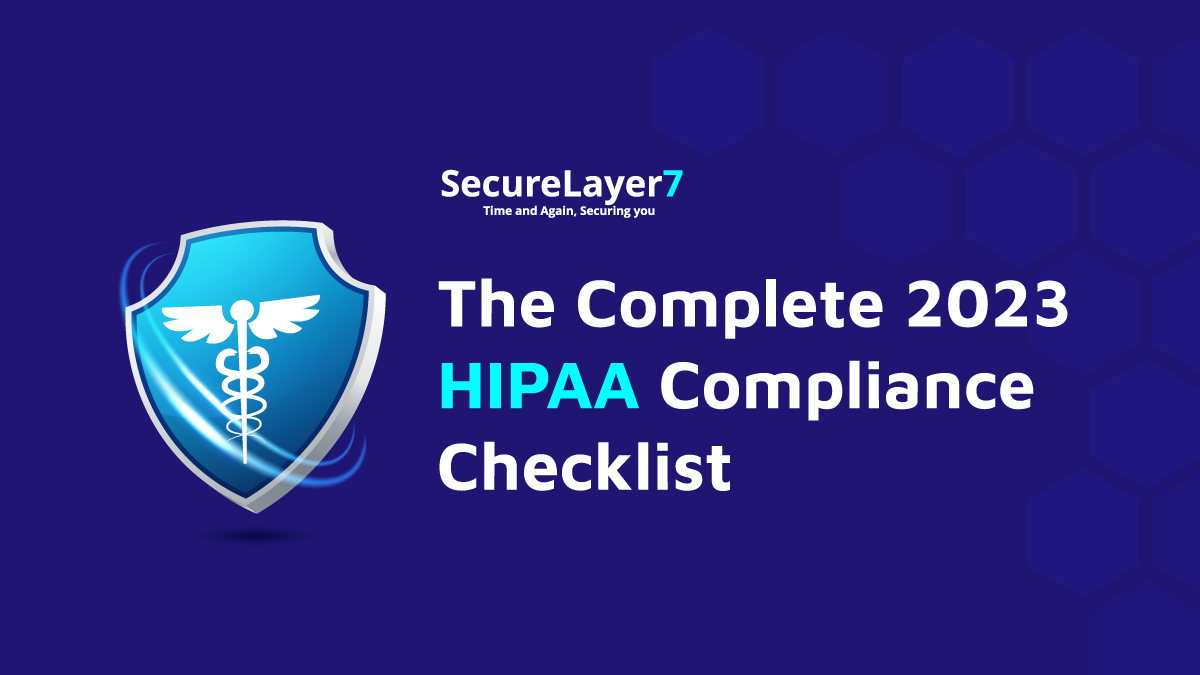
The Complete 2023 HIPAA Compliance Checklist
December 6, 2022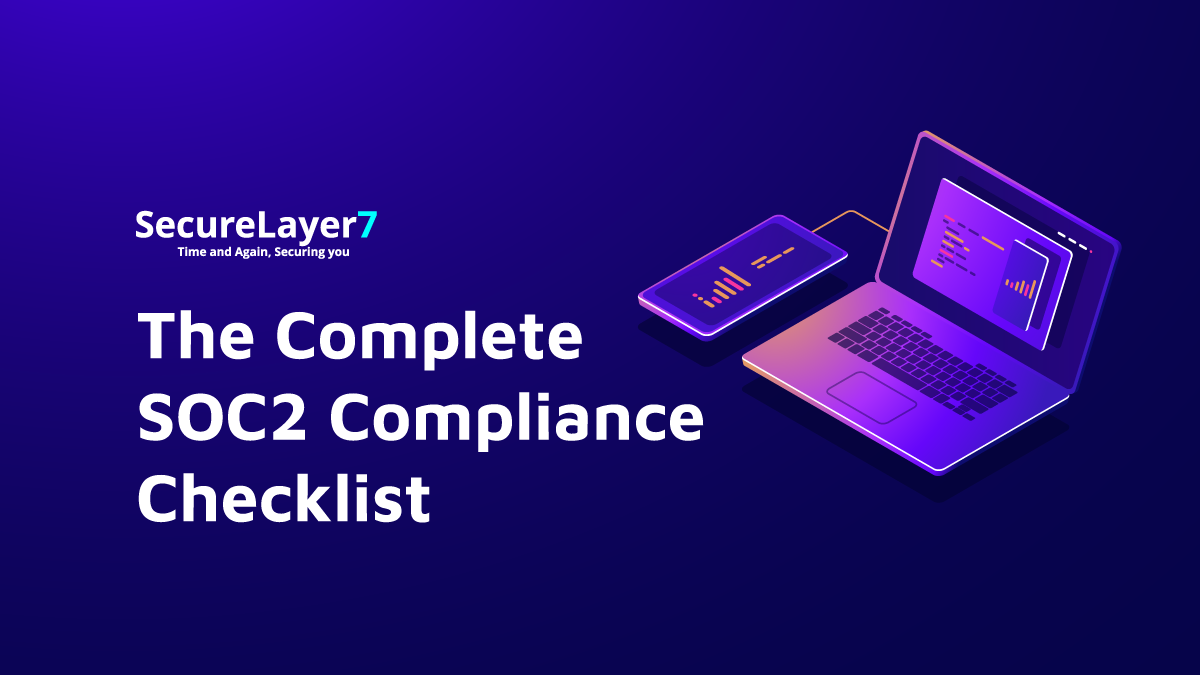
The Complete SOC2 Compliance Checklist
December 16, 2022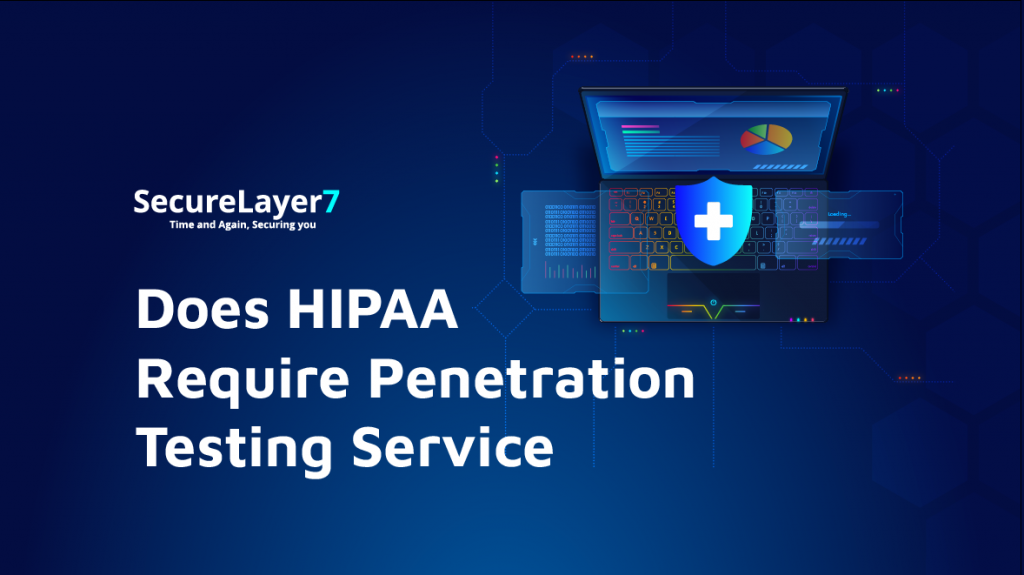
Healthcare organizations are responsible for safeguarding a significant amount of protected information in addition to increasing patient quality of life.
The abundance of personally identifying information in medical records attracts hackers (Social Security numbers, insurance information, payment processing details, etc.). Healthcare organizations must therefore secure their networks and systems to ensure HIPAA compliance and safeguard electronic protected health information (ePHI).
This entails keeping a secure network, securing cardholder data, addressing vulnerabilities, adopting robust access control measures, and frequent monitoring and testing networks.
That’s where HIPPA penetration testing comes in. HIPAA penetration tests help find vulnerabilities before hackers can identify and abuse them. This kind of evaluation benefits the healthcare organization by:
- Identifying any environmental flaws that exist.
- Recognizing the risk exposure level of the organization.
- Aiding in addressing and fixing found errors.
As an organization, you want to safeguard sensitive information from cyber criminals, and to ensure that, you need penetration testing. But let’s start from the top.
What is HIPAA Penetration Testing?
On August 21, 1996, the Healthcare Insurance Portability and Accountability Act, or HIPAA as it is more widely known, was created as a modernization initiative for medical records. The vast majority of medical records were retained on paper until the mid-1990s.
Prior to the implementation of HIPAA, there were no federal regulations governing the exchange or protection of private health information. When HIPAA was developed, there were powerful external factors affecting every industry, including the healthcare industry.
Legislators and medical professionals realized that patient data needed to be protected while also being accessible to the patients themselves as the world became more data-driven, exceeding the rate of change in the healthcare sector. Regulators and healthcare experts realized that in the future, health records would need to be digitized and kept in an electronic format.
The HIPAA framework is under the control of the US Department of Health and Human Services (HHS). The HHS works with government organizations and cybersecurity specialists to design regulations that safeguard healthcare organizations, their partner organizations, and their clients.
Although it’s not a HIPAA requirement, penetration testing is a technique that evaluates the robustness of these standards, making it a crucial component of HIPAA compliance.
Is Penetration Testing Required Under HIPAA?
A penetration test is not expressly mandated by HIPAA requirements. However, covered businesses must conduct a security risk analysis as per the rules.
Covered entities must assess risks and vulnerabilities in their environments as part of the risk analysis required by the HIPAA Security Rule, and they must put security measures in place to mitigate those risks and vulnerabilities. Access controls, audit controls, integrity controls, authentication controls, and transmission security measures should all be in place in healthcare businesses.
As previously mentioned, Covered Entities are required to use continuous monitoring and technical evaluation techniques in accordance with the administrative safeguard evaluation standard. This technique is HIPAA penetration testing, which evaluates the efficacy of security measures.
Risk analysis is a requirement under HIPAA for covered companies to detect and evaluate the dangers connected to your systems with the use of pen testing. You must put security measures in place to guard against unauthorized access to, use of, disclosure of, alteration of, or destruction of electronically protected health information, according to the HIPAA Security Rule (ePHI).
You can use penetration testing to check the efficiency of your security mechanisms and make sure they adhere to HIPAA regulations.
Penetration Testing Requirements for HIPAA Compliance
Understanding a few basic concepts is essential to comprehending what compliance is and to whom it pertains.
Hospitals, physicians, medical facilities, insurance companies, and other organizations that frequently deal with patients’ personal information are considered Covered Entities.
Service providers who collaborate closely with Covered Entities but do not deal directly with patients are referred to as business associates. Due to their technology products, consultancy, financial management, data analysis, or other services, business partners frequently handle private data.
The administration and preservation of ePHI are referenced in all privacy, security, and reporting regulations.
After knowing the concepts, let’s look at the rules that define the structure and meaning of everything related to compliance requirements:
The HIPAA Privacy Rule
Patients’ rights to privacy and personal information are set forth in the HIPAA Privacy Rule as the national norm. Additionally, it establishes the guidelines for what constitutes ePHI, how it must be safeguarded, how it can or cannot be used, as well as how it should be communicated and stored.
The documentation and exemptions that organizations managing ePHI are required to submit are another aspect of the Privacy Rule.
Any identifiable patient data is subject to privacy protection by the covered entity or any businesses connected, according to this rule’s definition of ePHI. The following is an example of “protected health information”:
- Any past, present, or future documentation on physical or mental conditions.
- Any records about the care of the patient.
- Any records referencing past, present, or future payments for healthcare.
According to the rule, highly particular care, research, or legal circumstances are the only ones in which covered companies may share private health information. These circumstances are extremely limited in and of themselves open to interpretation in a court of law. The Covered Entity and their Business Associates have a duty to protect ePHI privacy.
The HIPAA Security Rule
The next stage is to protect that data when the definition of privacy and ePHI has been established. The nationwide criteria for the defenses needed to safeguard ePHI data were established by the HIPAA Security Rule.
These safeguards cover every aspect of the covered entity’s operations, including technology, management, physical security measures for computers and other equipment, and anything else that can jeopardize the security of ePHI.
The three categories of safeguards that make up this rule’s controls are:
- Administrative: This covers all other security measures’ technology, risk management, and maintenance plans, as well as the policies and procedures that affect ePHI. It also covers administrative facets of healthcare, such as human resources and employee development.
- Physical: Access to physical equipment, such as computers, routers, switches, and data storage, is secured by physical security measures. The upkeep of secure facilities where only authorized personnel can access data is a requirement for Covered Entities.
- Technical: Computers, mobile devices, encryption, network security, device security, and anything else having to do with the actual technology of storing and transmitting ePHI are all included in the term “cybersecurity.”
The HIPAA Breach Notification Rule
What happens in the event of a security breach is laid out in the Breach Notification Rule. Since it’s nearly impossible to completely protect data, firms must have policies in place for informing the public and HIPAA breach victims of what happened and what to do next.
In order to comply with the Breach Notification requirement, every Covered Entity must follow a set of steps while a breach is ongoing. The steps are as follows:
- Anyone affected by a breach should be informed. Victims must receive formal written notice of the breach from covered companies, either via first-class mail or email (if applicable).
- If the Covered Entity doesn’t have contact information for more than 10 people in a breach, then they must provide alternative notice either through a posting on the website for 90 days or a notice in major print and broadcast news sources.
- Within 60 days of learning of the breach, the Entity must give notice.
- Local media sources must publish a significant public notice of the breach if it affects more than 500 people in a State or other jurisdiction.
- If the breach affects more than 500 people, the Entity must also deliver a Notice to the Secretary of Health within 60 days. If it is less, the organization has until the end of the year to update the Secretary.
Any breaches disclosed to the Covered Entity by one of their business partners are subject to the notification requirements.
The HIPAA Omnibus Rule
The Omnibus rule, which was passed more recently, extends the application of regulations to entities other than Covered Entities.
The Omnibus Rule essentially states that contractors and business associates are subject to compliance duties. As a result, Covered Entities must update their gap analyses, risk assessments, and compliance procedures in order to account for any potential violations by Business Associates and contractors.
Conclusion
Penetration testing is an important part of ensuring compliance with a variety of regulatory frameworks. By identifying and assessing the risks associated with your systems, you can verify that your security controls are adequate and meet the specific requirements of each framework.
Penetration testing can also provide evidence of due diligence for auditors. When it comes to compliance, it is always advisable to consult an expert penetration testing company specialized in meeting compliance requirements.
